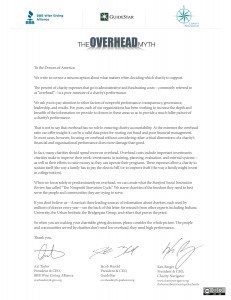 It wasn’t even a year ago when the CEOs of BBB Wise Giving Alliance, Guidestar and Charity Navigator all signed a letter encouraging donors to stop looking at the concept of “overhead” to determine the effectiveness and efficiency of non-profit organizations. This letter was the culmination of many efforts and lots of voices including Dan Pallotta, who is the author of “Uncharitable”. Bloggers and non-profit professional everywhere heralded this as a campaign that will put an end to what is commonly referred to a “The Overhead Myth“.
It wasn’t even a year ago when the CEOs of BBB Wise Giving Alliance, Guidestar and Charity Navigator all signed a letter encouraging donors to stop looking at the concept of “overhead” to determine the effectiveness and efficiency of non-profit organizations. This letter was the culmination of many efforts and lots of voices including Dan Pallotta, who is the author of “Uncharitable”. Bloggers and non-profit professional everywhere heralded this as a campaign that will put an end to what is commonly referred to a “The Overhead Myth“.
Over the years, I have written a number of blogs on this subject including:
- July 17, 2012: “Does your non-profit make a difference? Americans don’t think so!“
- July 18, 2012: “Why is the non-profit sector hamstrung?“
- July 19, 2012: “Stop thinking. Stop planning. Start doing!“
- June 27, 2013: “Ending the ‘overhead myth’ is everywhere“
- July 26, 2013: “Is your non-profit only living for today? Then you need Picasso!“
At the end of my June 27, 2013 post, I wrote the following:
“I personally don’t think anything is going to change as a result of this “overhead myth” campaign push. I think donors are set in their ways. I believe Dan Pallotta was right about the Puritan influence on our culture. I don’t think “culture” and “values” and “habits” are easy to change. AND I think talk is cheap.”
As you can imagine, I was roundly criticized for being a “negative, glass-half-empty” kind of person. That’s OK . . . I have thick skin.
Besides, I knew I was right which always goes a long way when it comes to swallowing criticism. 😉
 As they say, the proof is in the pudding which is what inspired today’s blog post. The pudding, of course, is an article that washed into my email inbox from LinkedIn on November 30, 2013. The author was John Wasik and the article was titled “Digging Into Non-Profit Finances: Four Things To Check“.
As they say, the proof is in the pudding which is what inspired today’s blog post. The pudding, of course, is an article that washed into my email inbox from LinkedIn on November 30, 2013. The author was John Wasik and the article was titled “Digging Into Non-Profit Finances: Four Things To Check“.
In his post, Wasik talked about illegitimate non-profit organizations and the lack of real oversight for our sector. He shared four tips with readers/donors on what they should look for before making a charitable contribution.
Yep . . . you guessed it. He points to the classic definition of “overhead“. Here is what he said:
“What percentage of the non-profit’s income went towards it mission? This is also a key red flag. This percentage is also known as ‘the overhead ratio,’ which tells you how much was spend on non-program expenses such as fundraising and administration. A fairly well-run non-profit will spend at least 80% on its mission.”
The truth of the matter is that this morning’s blog post isn’t really a victory lap or an “I told you so…” article. The reality is that I am annoyed at my fellow non-profit professionals.
Did we really think that an open letter to the world was going to suddenly change everything?
I certainly hope not!
As I said back in June, “I don’t think “culture” and “values” and “habits” are easy to change. AND I think talk is cheap.”
All of this leads me to wonder . . . what have you been doing on the front line to educate your donors and bring an end to “the overhead myth“?
Ohhhhhhhhh . . . you don’t know what to do about it? Well, here are a few suggestions to get your creative juices flowing:
- Post the open letter from BBB, Guidestar and Charity Navigator to your website.
- If your agency runs a blog aimed at a donor audience, then blog about it.
- During your year-end stewardship meetings with your top donors, figure out a way to talk about it.
- Organize a focus group of board members around reading Dan Pallotta’s book “Uncharitable” and talking about it.
- Stop highlighting and reinforcing “the overhead myth” in your annual report documents with pie charts showing how much you spend on programming vs. administration vs. fundraising. STOP!
OK . . . I got the ball rolling for you. Please scroll the down and use the comment box below to share additional ideas with your fellow non-profit professionals.
Not only can we learn from each other, but we can also inspire each other to solve bigger problems together. Please take 30 seconds out of your busy day to share one idea. Please?
Here’s to your health!
Erik Anderson
Founder & President, The Healthy Non-Profit LLC
www.thehealthynonprofit.com
erik@thehealthynonprofit.com
http://twitter.com/#!/eanderson847
http://www.facebook.com/eanderson847
http://www.linkedin.com/in/erikanderson847


 The most important question in all marketing is one we broached in
The most important question in all marketing is one we broached in  As you work to perfect your strategies, it is important to take some time to test it through what Safko calls segmenting.
As you work to perfect your strategies, it is important to take some time to test it through what Safko calls segmenting.
 Wow! We have lots of money in our community.
Wow! We have lots of money in our community. Here is a recipe I suggest you consider when it comes to your prospect identification strategy:
Here is a recipe I suggest you consider when it comes to your prospect identification strategy: Oh heck . . . if you don’t want to follow this simple, sound and proven advice, then hire me. I am happy to be your water witch. Just give me a moment to run out back and pick a fresh Y-shaped stick off of my magic fundraising tree.
Oh heck . . . if you don’t want to follow this simple, sound and proven advice, then hire me. I am happy to be your water witch. Just give me a moment to run out back and pick a fresh Y-shaped stick off of my magic fundraising tree. I was having breakfast this week with a friend and fellow consultant and we were discussing resource development efforts, including events and grants. By now I’m sure you are well aware, I’m not a huge fan of organizations hosting multiple events. Events are expensive, labor intensive and don’t usually generate a lot of income.
I was having breakfast this week with a friend and fellow consultant and we were discussing resource development efforts, including events and grants. By now I’m sure you are well aware, I’m not a huge fan of organizations hosting multiple events. Events are expensive, labor intensive and don’t usually generate a lot of income.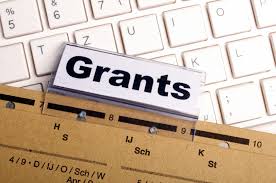 Grants, which are often 30% to 50% of an agency’s budget, more if they receive United Way funding, are one way. Yet, they too come with a cost. Most agencies get somewhere between 50% to 80% of the grants they submit. That means that the time spent on writing the 20% to 50% of the grants that don’t get funded is time lost. For the grants that are secured, there are reports to be written, dollars to be tracked, objectives to reach and programming to introduce. All of which is as it should be, and none of which is without cost.
Grants, which are often 30% to 50% of an agency’s budget, more if they receive United Way funding, are one way. Yet, they too come with a cost. Most agencies get somewhere between 50% to 80% of the grants they submit. That means that the time spent on writing the 20% to 50% of the grants that don’t get funded is time lost. For the grants that are secured, there are reports to be written, dollars to be tracked, objectives to reach and programming to introduce. All of which is as it should be, and none of which is without cost.
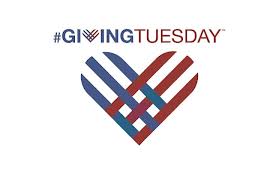 The turkey has been consumed (and so have the leftovers). Black Friday came and went with only a few bumps and bruises for Americans. Cyber Monday also came and went with consumer dollars flying all over the information super highway. Are you ready for one last hurdle? Today, is
The turkey has been consumed (and so have the leftovers). Black Friday came and went with only a few bumps and bruises for Americans. Cyber Monday also came and went with consumer dollars flying all over the information super highway. Are you ready for one last hurdle? Today, is 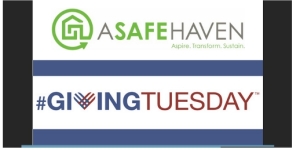
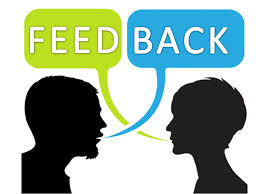 I read this and imagine my organization with engaged donors engaged in open communication, positive feedback, while building a better organization. Ahhhh, nirvana, but wait . . . did he say negative feedback, too?
I read this and imagine my organization with engaged donors engaged in open communication, positive feedback, while building a better organization. Ahhhh, nirvana, but wait . . . did he say negative feedback, too? The new normal has forced a lot of nonprofit leaders to rethink the way they do business. Crises, as unpleasant as they are to experience, allow for growth. I love Rahm Emanuel’s quote “Never let a good crisis go to waste.”
The new normal has forced a lot of nonprofit leaders to rethink the way they do business. Crises, as unpleasant as they are to experience, allow for growth. I love Rahm Emanuel’s quote “Never let a good crisis go to waste.” Let’s get those people together and brain storm: Where are we today? Where do we want to go? How can we get there?
Let’s get those people together and brain storm: Where are we today? Where do we want to go? How can we get there? As many of you know, I’m on a temporary assignment for the next few months working with a group of 20 non-profit organizations throughout New Mexico and West Texas. Last night was my first site visit, and the executive director did something that inspired this morning’s post about personal (yet simple) ways to thank your donors.
As many of you know, I’m on a temporary assignment for the next few months working with a group of 20 non-profit organizations throughout New Mexico and West Texas. Last night was my first site visit, and the executive director did something that inspired this morning’s post about personal (yet simple) ways to thank your donors. This is what I saw:
This is what I saw: In recent weeks, I’ve started receiving phone calls from board volunteers thanking me for my support of their agency.
In recent weeks, I’ve started receiving phone calls from board volunteers thanking me for my support of their agency.
 Last week I was out to lunch with two male non-profit friends in downtown Chicago when the topic of women board volunteers came up. This happens from time-to-time, and when it does I always bite my tongue because I tend to have strong opinions on this subject. So, I took a deep breath and prepared for what I assumed was going to be one of those “difficult and uncomfortable conversations“. Boy oh boy . . .was I wrong (and pleasantly surprised).
Last week I was out to lunch with two male non-profit friends in downtown Chicago when the topic of women board volunteers came up. This happens from time-to-time, and when it does I always bite my tongue because I tend to have strong opinions on this subject. So, I took a deep breath and prepared for what I assumed was going to be one of those “difficult and uncomfortable conversations“. Boy oh boy . . .was I wrong (and pleasantly surprised).